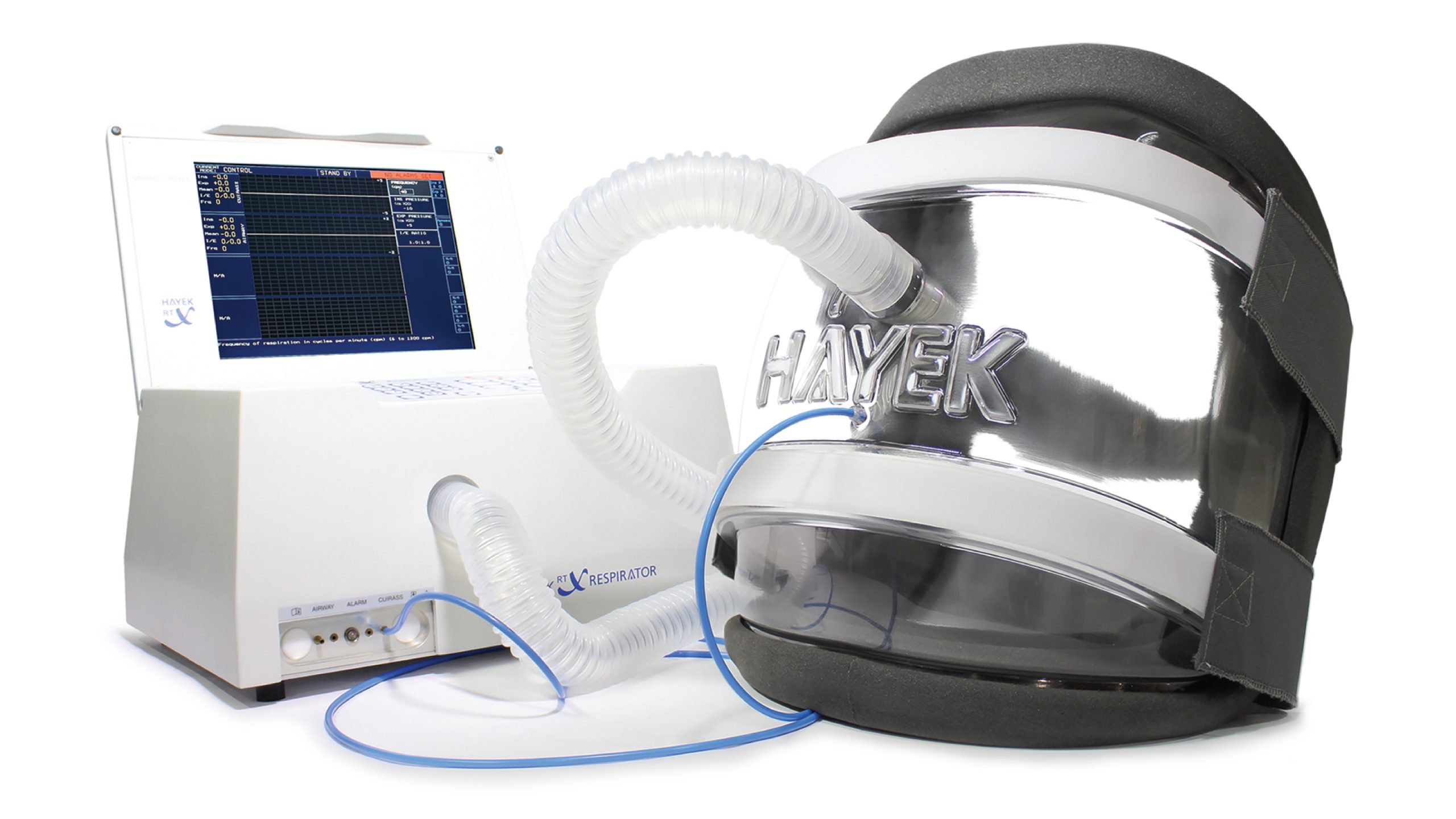Biphasic Cuirass Ventilation (BCV) can be used effectively to ventilate a patient with hypercapnia and acute or chronic ventilatory failure. The patient’s work of breathing, the use of accessory muscles and tachypnea will decrease when BCV is implemented. Alveolar recruitment will improve gas exchange and facilitate the management of secretions. BCV has shown to have similar gas exchange benefits as active proning when used on infants and small children. As noted in the January 2020 Respiratory Care Journal, “Negative pressure ventilation successfully supported 69% of pediatric subjects with acute respiratory failure with a complication rate of < 2%.”


